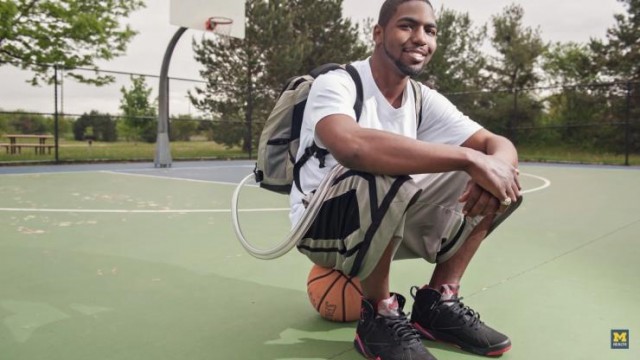
Advertisement
Stan Larkin, 25, was able to survive without a heart for a whopping 555 days by carrying around an artificial organ in his backpack.
Larkin and his other brother, Dominique, were diagnosed as adolescents with familial cardiomyopathy, a genetic disorder that causes heart failure with age. Around nine years ago, Larkin collapsed while playing basketball. He was diagnosed with arrhythmogenic right ventricular dysplasia (ARVD), which causes irregular heartbeats and increases the risk for sudden cardiac arrest.
Doctors inserted a defibrillator in Larkin’s chest in an effort to normalize his heartbeat. Although he refrained from strenuous activities, the defibrillators were starting to wane. Larkin’s ARVD advanced to bi-ventricular dysplasia, meaning his defibrillators were no longer sufficient to treat the condition.
A heart stopper
As a result, Larkin needed a heart transplant. Both he and his brother were put on a donor list, which can take years before individuals can actually receive a heart transplant. Meanwhile, Larkin’s condition continued to worsen.
In November 2014, Larkin went into cardiogenic shock, which resulted in doctors removing his entire heart. He was originally attached to a machine intended to keep patients alive while waiting for a transplant.
After a month, Larkin was discharged from the hospital equipped with a SynCardia Freedrom Total Artificial Heart, which enabled him to move. The device was fitted inside a backpack and connected to his body beneath the ribcage. The machine has a display panel that monitors the patient’s heartbeats per minute, fill volume and cardiac output.

While Larkin was able to move and play basketball, he wasn’t without his hurdles. For instance, he was unable to take a bath since the SynCardia device was electric.
Larkin’s brother was also fitted with a portable SynCardia Freedrom Total Artificial Heart and successfully underwent a heart transplant in 2015. 18 months later, Larkin underwent his own heart transplant at the University of Michigan Frankel Cardiovascular Centre by Jonathan Haft, M.D.
Race against the clock
“We wanted to get them heart transplants, but we didn’t think we had enough time,” Larkin said in reference to his brother. “There’s just something about their unique anatomic situation where other technology wasn’t going to work.”
“It was an emotional rollercoaster,” Larkin said at a news conference in wake of his successful surgery. “I got the transplant two weeks ago and I feel like I could take a jog as we speak. I want to thank the donor who gave themselves for me. I’d like to meet their family one day. Hopefully they’d want to meet me.”
Larkin added that he encourages patients with severe heart disease to consider having the device implanted. “I would recommend it because if your other organs are sick, it will bring them back and get them 100 percent healthy and ready for transplant,” he said.
According to figures provided by the U.S. Organ Procurement and Transplantation Network, there are approximately 4,000 people in the U.S. waiting for a heart transplant.
Sources:
Submit a correction >>
This article may contain statements that reflect the opinion of the author
Advertisement
Advertisements















